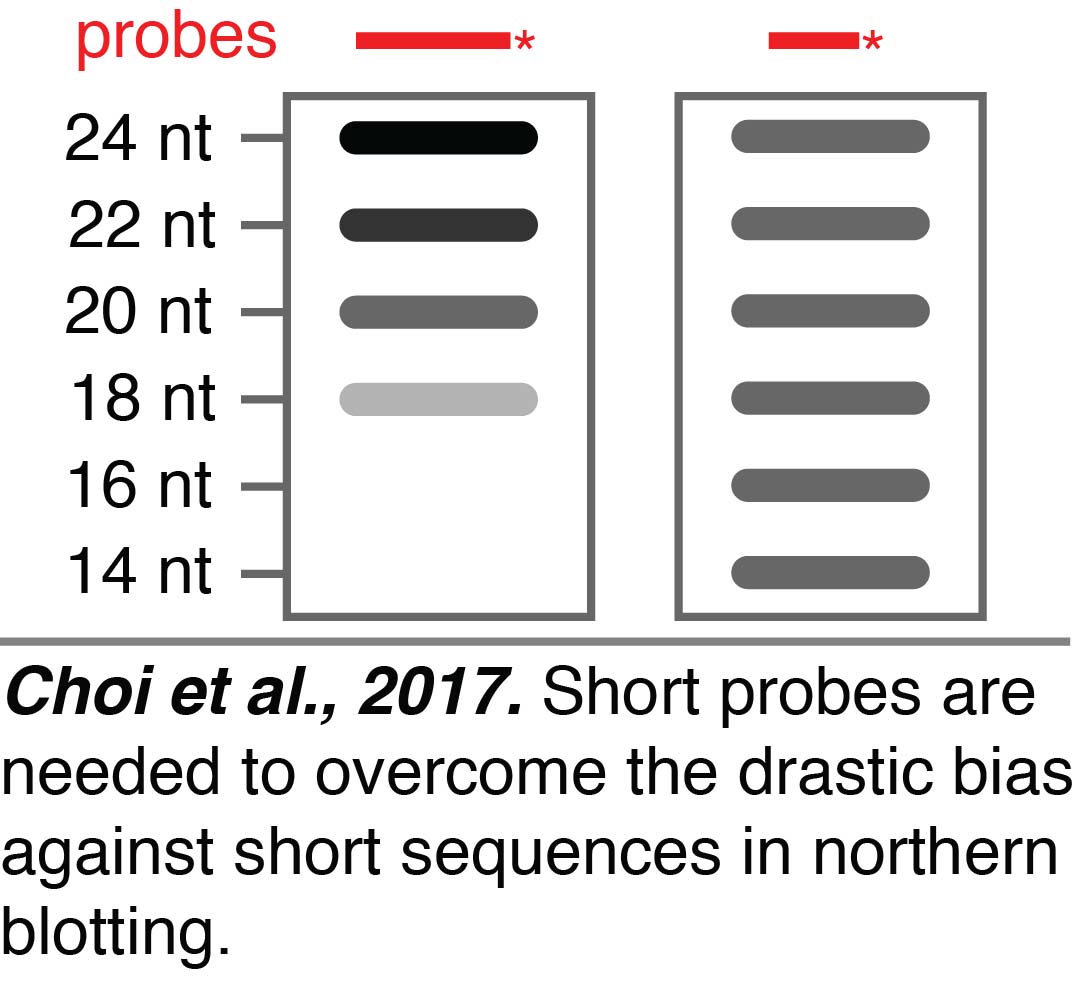Tiny RNA
Small RNAs are major regulators of gene expression in C. elegans, and there are millions of them. They are typically identified using RNA-seq, but the effective analysis of the resulting data is a challenge. Therefore, we created a set of programs called PACER (Programs for Analysis of C. elegans small RNAs) to effectively analyze small RNAs detected through RNA-seq (Blumenfeld & Jose, 2016). Using PACER, we gained insight into the origins of the diverse set of antisense small RNAs called 22G RNAs that are used for sequence-specific gene regulation in C. elegans and discovered a new class of tiny RNAs that are shorter than 18 nucleotides (18-nt) called NU RNAs (pronounced “new RNAs”). The minimum length of a small RNA that is required for sequence-specific regulation depends on the sequence space that needs to be searched. Thus, we propose that RNAs shorter than 18-nt could be used for sequence-specific regulation – particularly in organisms with small genomes – and represent an underexplored world of functional tiny RNAs. This speculation is supported by our detection of NU RNAs despite most RNA-seq experiments selecting against RNAs that are less than 18-nt. When analyzing RNA-seq data, we discovered that some of the sequences present in a dataset could be generated during the preparatory steps required for RNA-seq,
When analyzing RNA-seq data, we discovered that some of the sequences present in a dataset could be generated during the preparatory steps required for RNA-seq,  highlighting the need for additional approaches to study small RNAs. Small RNAs can be independently examined using northern blotting. We found that northern blotting of small RNAs can have a drastic bias against short sequences (Choi et al., 2017). We greatly reduced the bias from ~360 fold against 18 nt RNAs compared to 24 nt RNAs when using a 24 nt probe to a maximum of ~4 fold across the entire range of 24 nt to 14 nt RNAs by using 15 nt probes and low hybridization temperatures. This improved northern blotting will be useful for the independent evaluation of any tiny RNAs that we discover when we perform RNA-seq without selecting against RNAs that are less than 18-nt.
The evolutionarily selected functions of NU RNAs, if any, are unknown. Whether there are additional such tiny RNAs in C. elegans and whether they are found in mammals and other organisms with larger genomes are also unknown.
highlighting the need for additional approaches to study small RNAs. Small RNAs can be independently examined using northern blotting. We found that northern blotting of small RNAs can have a drastic bias against short sequences (Choi et al., 2017). We greatly reduced the bias from ~360 fold against 18 nt RNAs compared to 24 nt RNAs when using a 24 nt probe to a maximum of ~4 fold across the entire range of 24 nt to 14 nt RNAs by using 15 nt probes and low hybridization temperatures. This improved northern blotting will be useful for the independent evaluation of any tiny RNAs that we discover when we perform RNA-seq without selecting against RNAs that are less than 18-nt.
The evolutionarily selected functions of NU RNAs, if any, are unknown. Whether there are additional such tiny RNAs in C. elegans and whether they are found in mammals and other organisms with larger genomes are also unknown.
Back to research
Last updated: Aug 2017
Web Accessibility